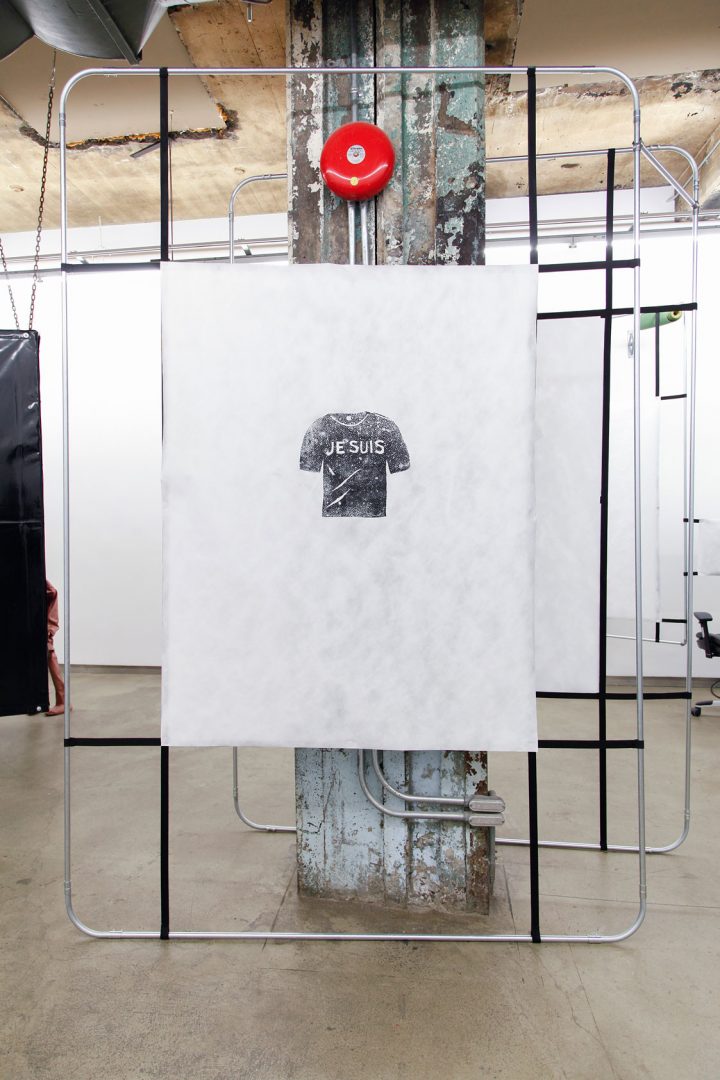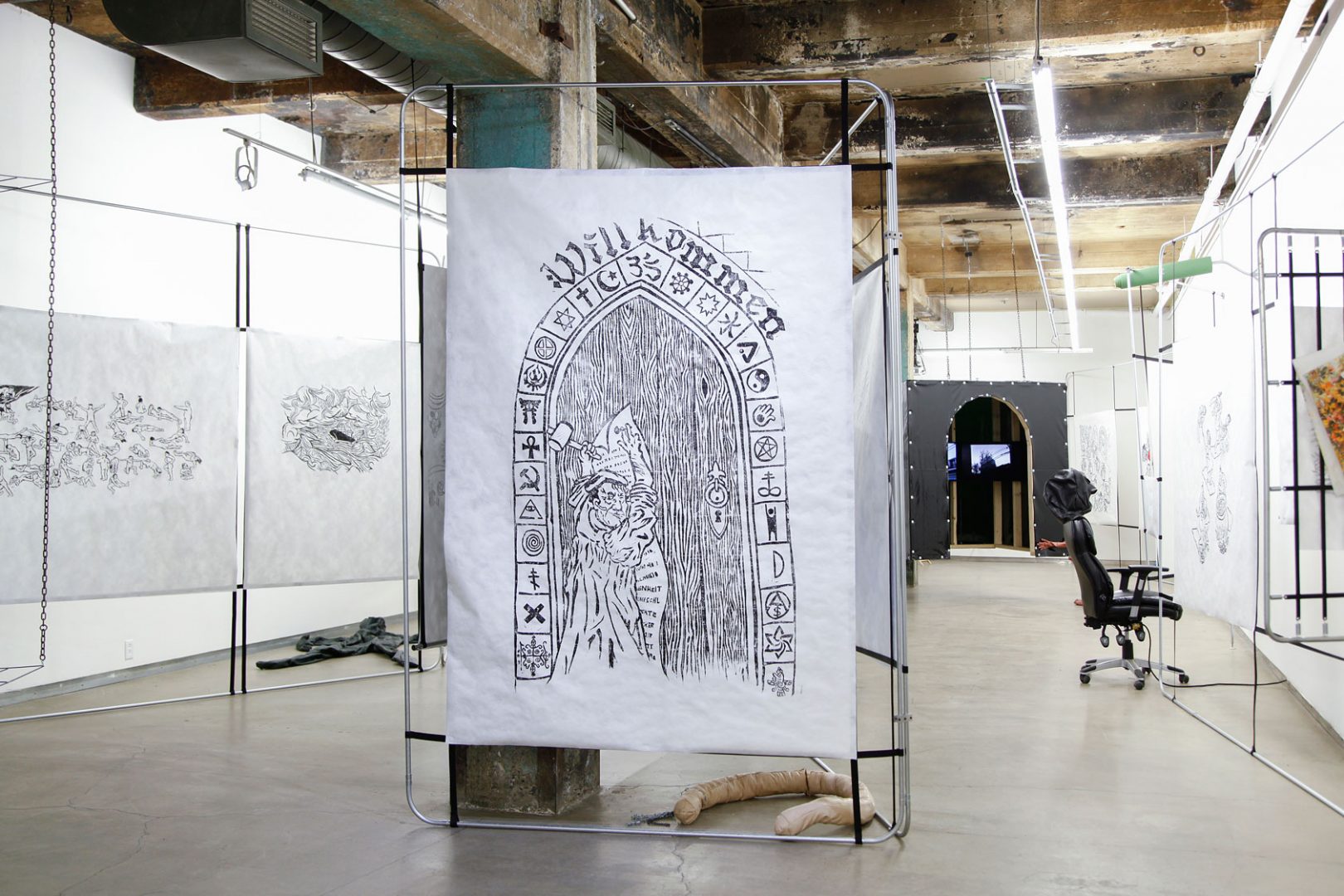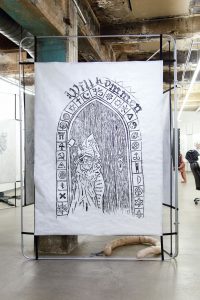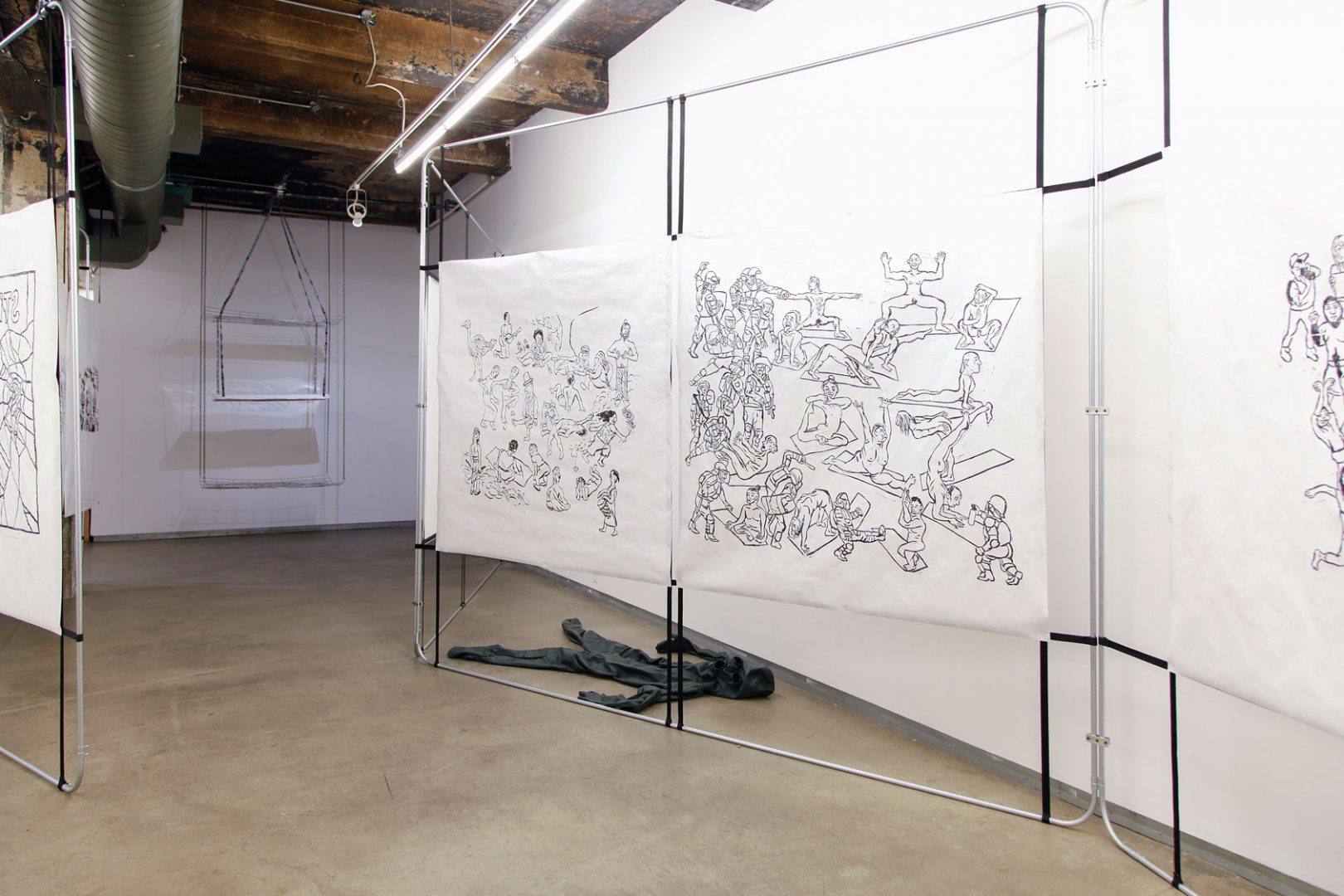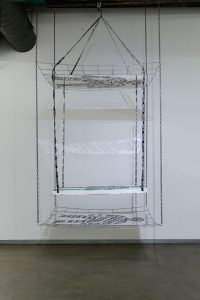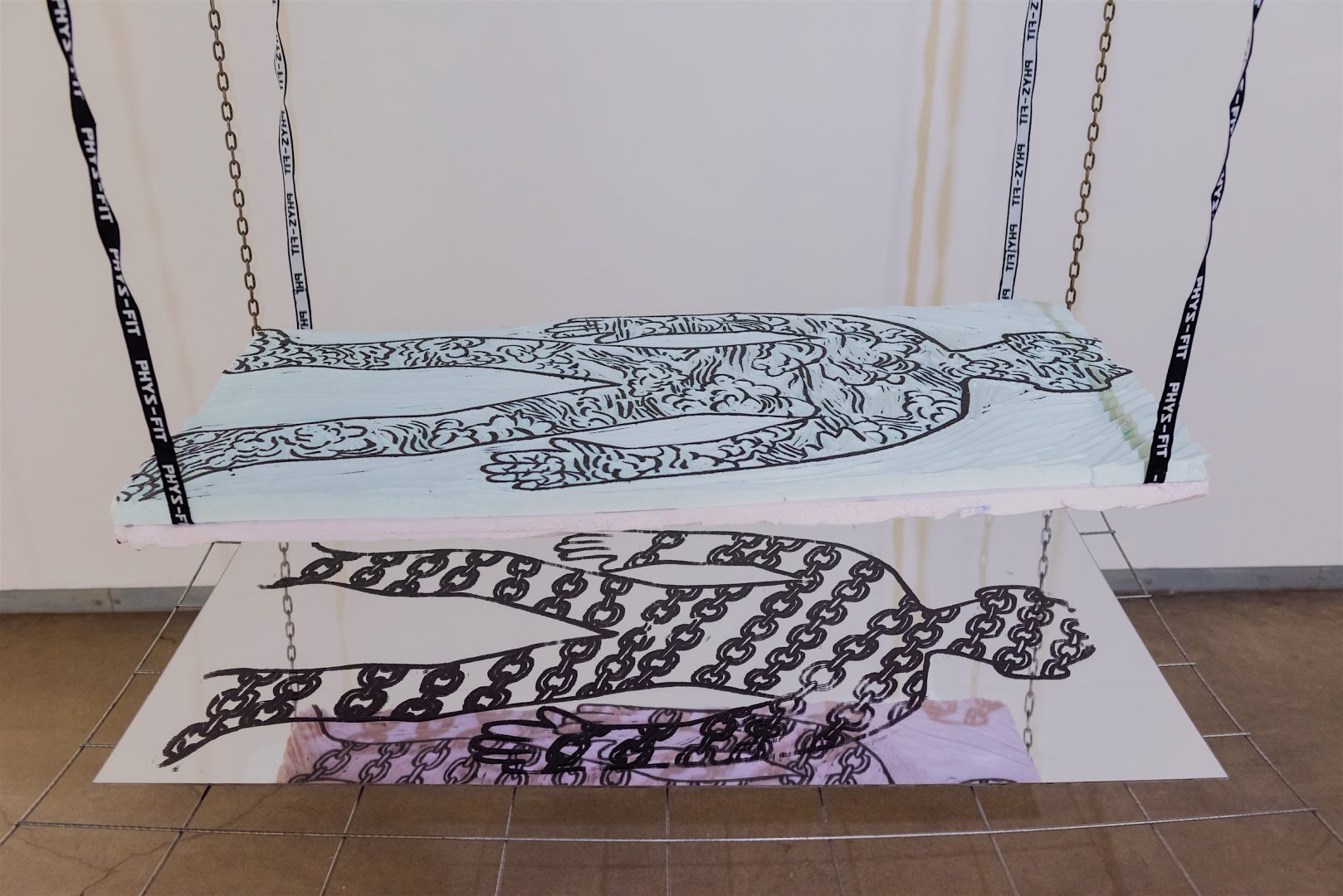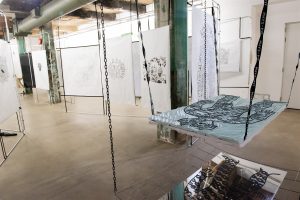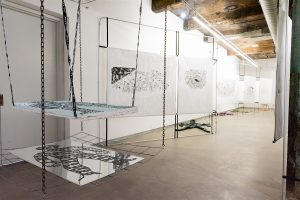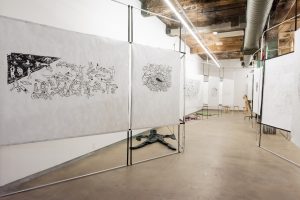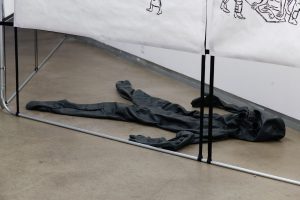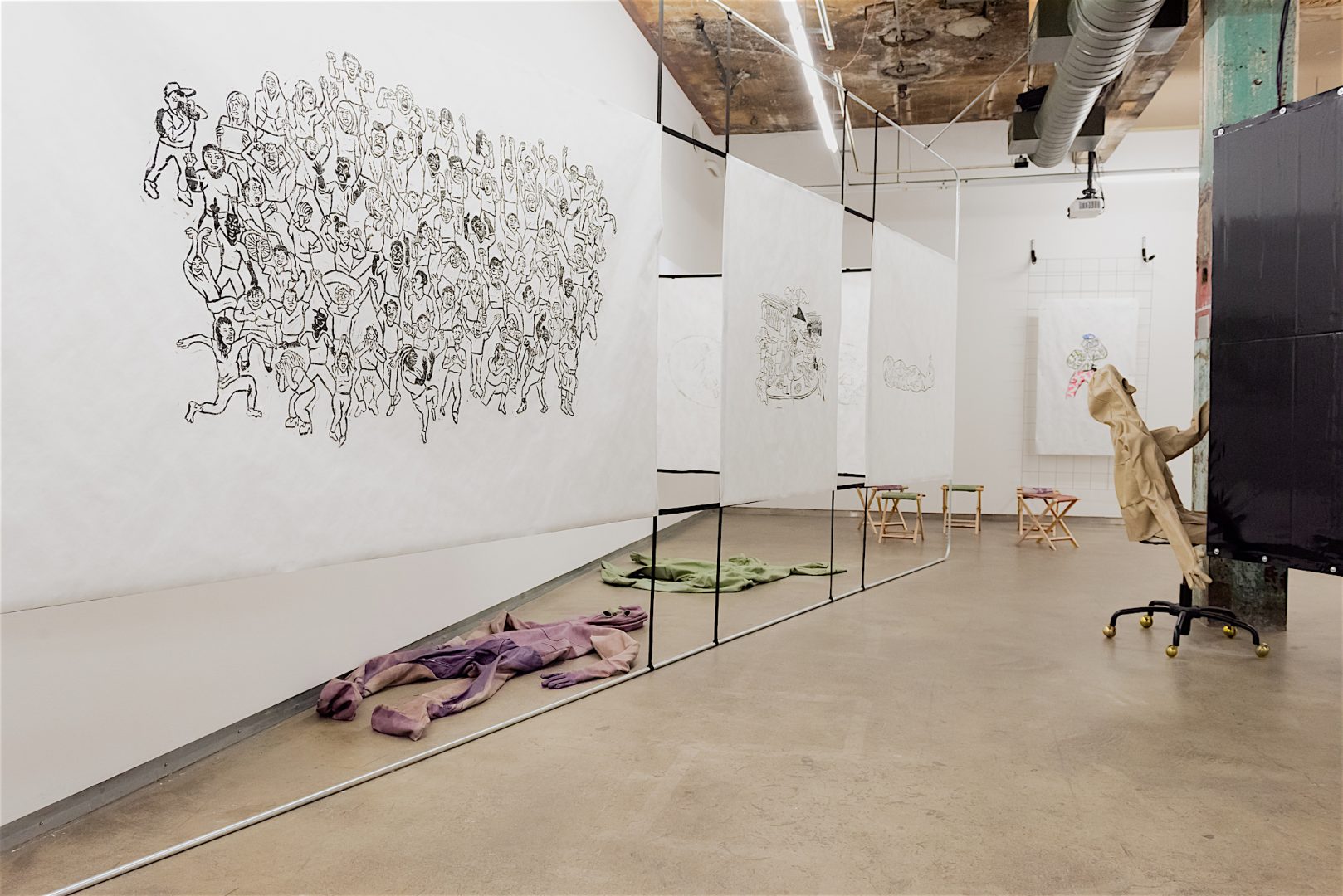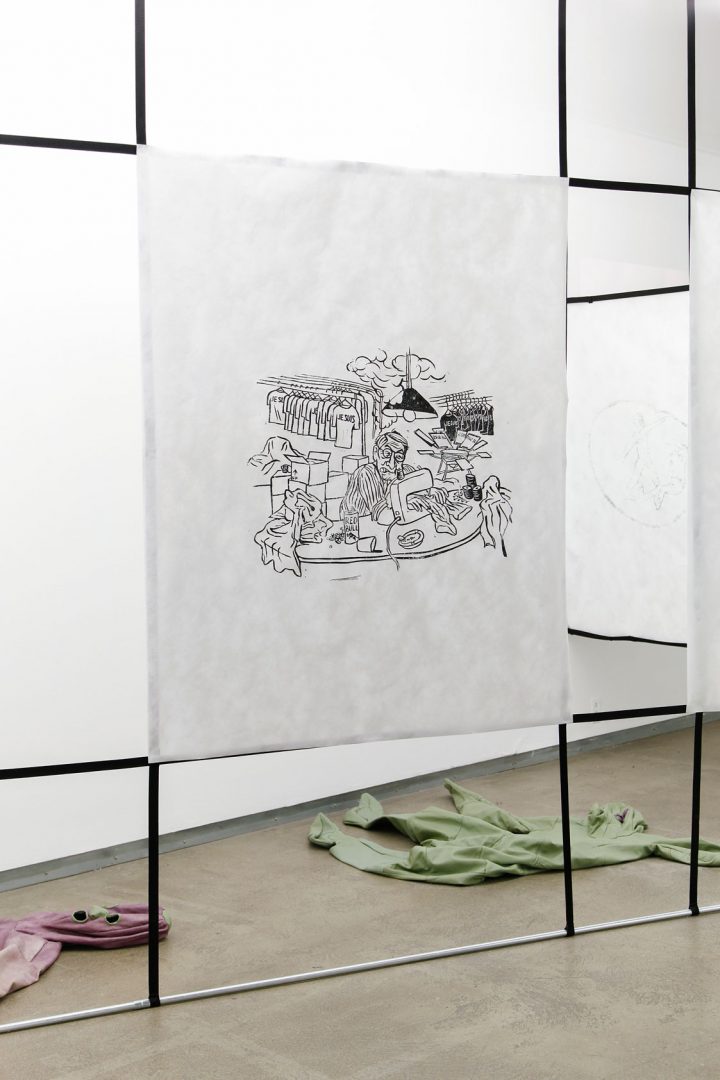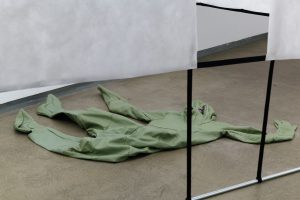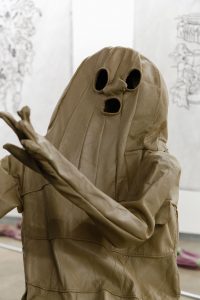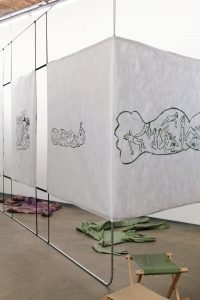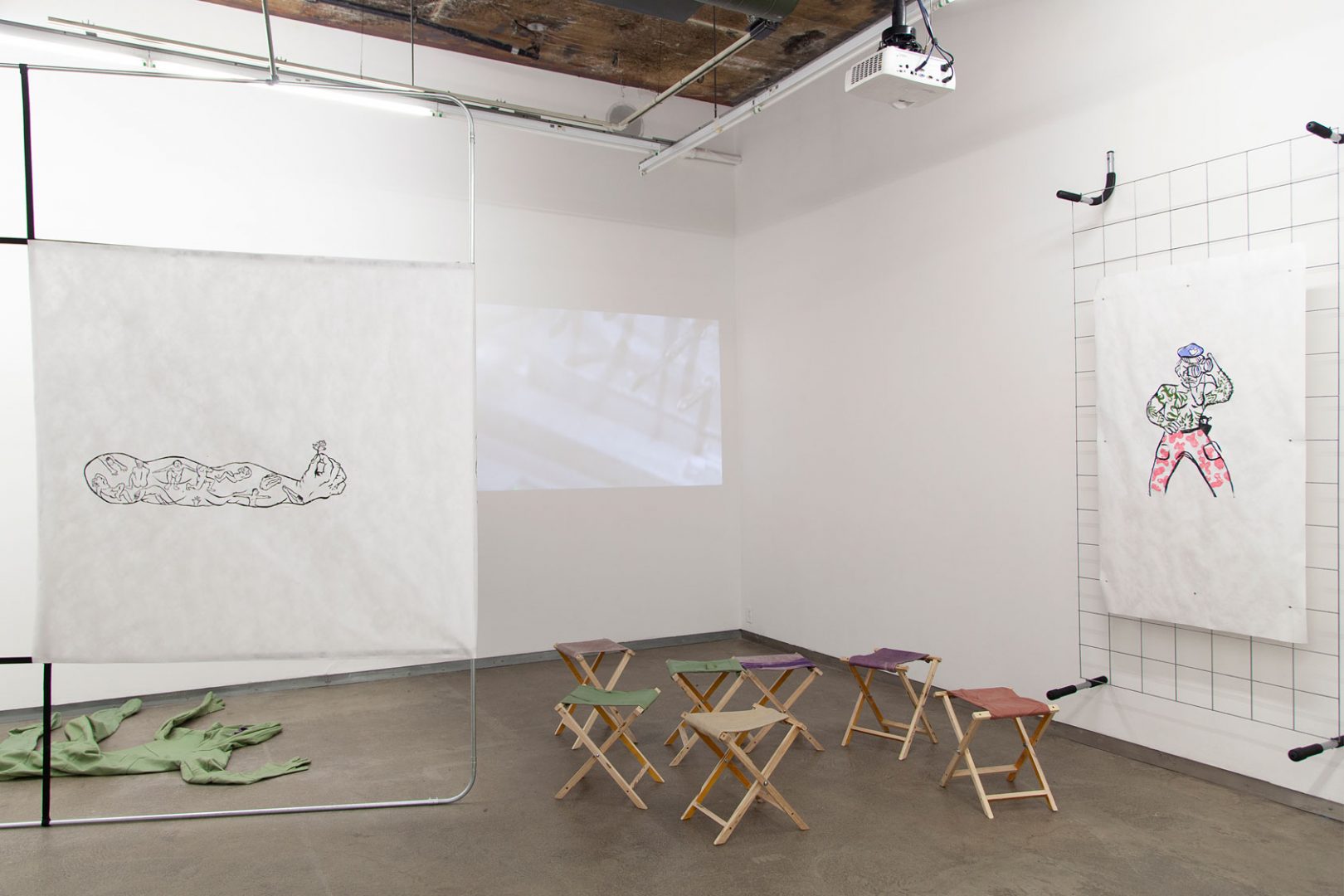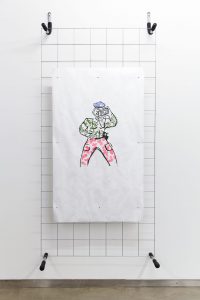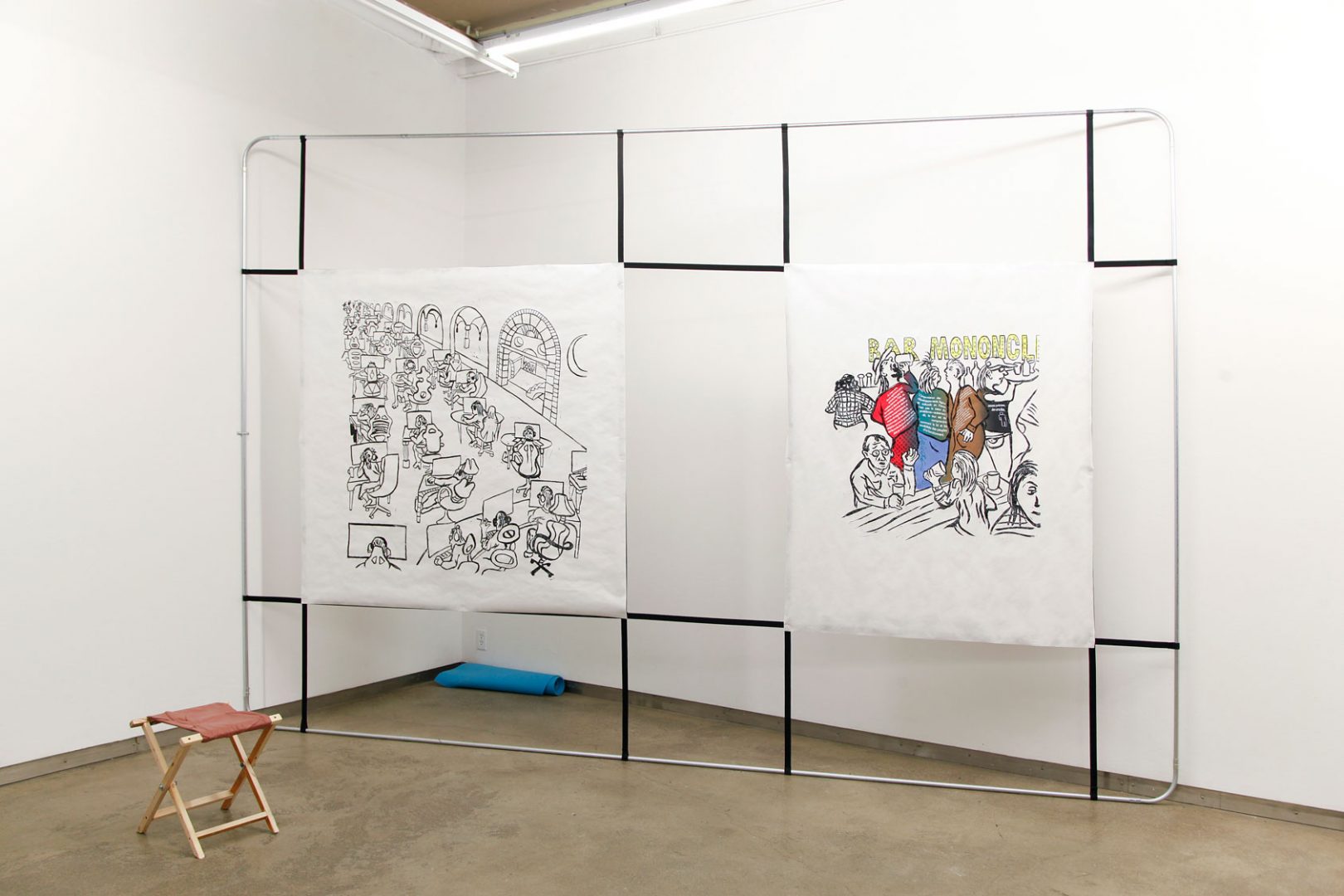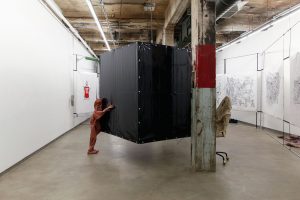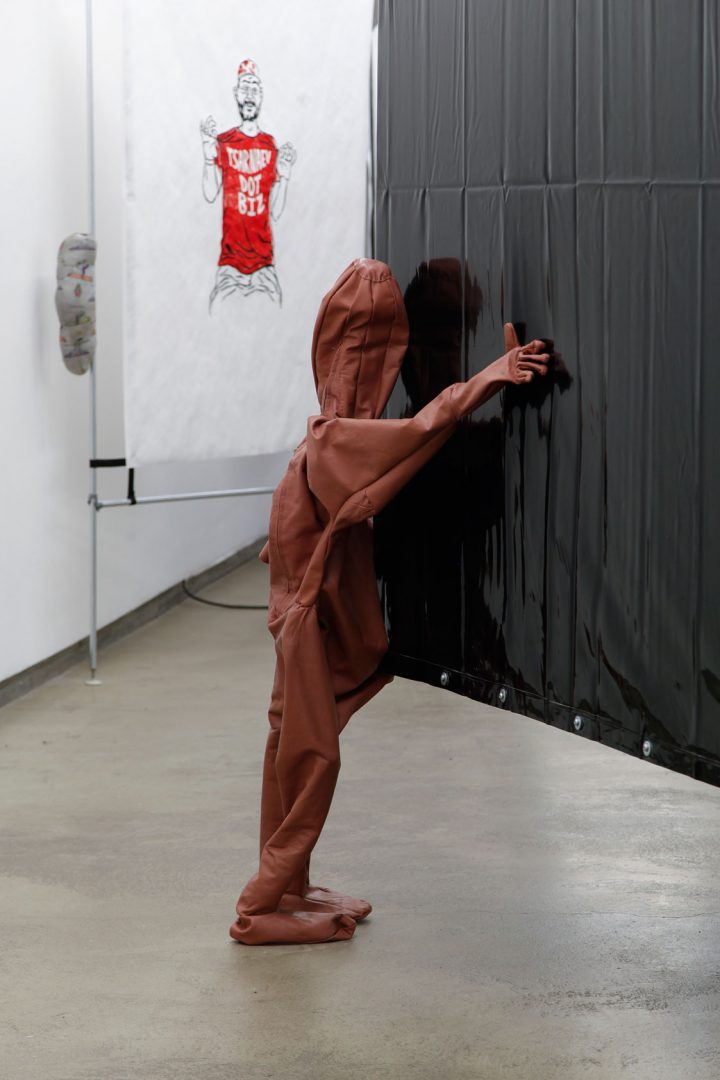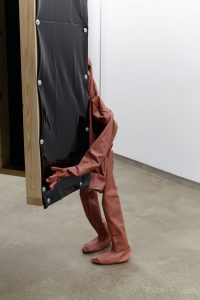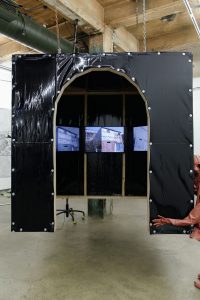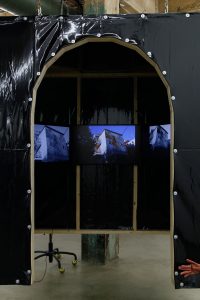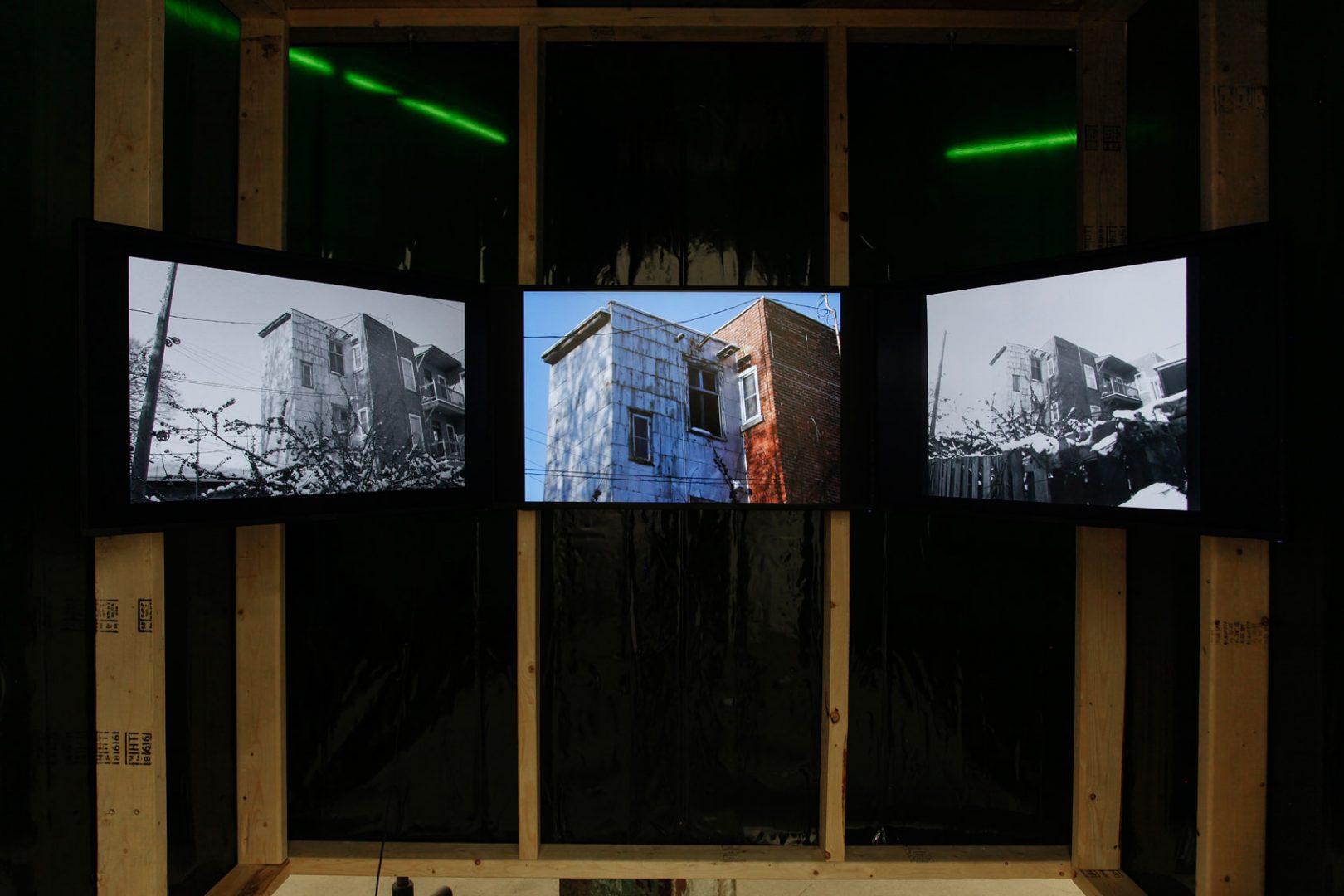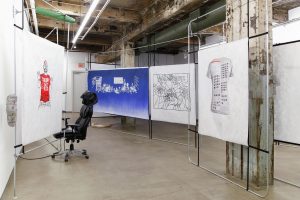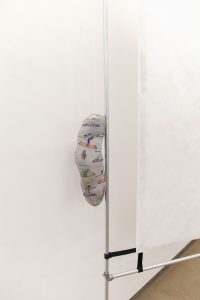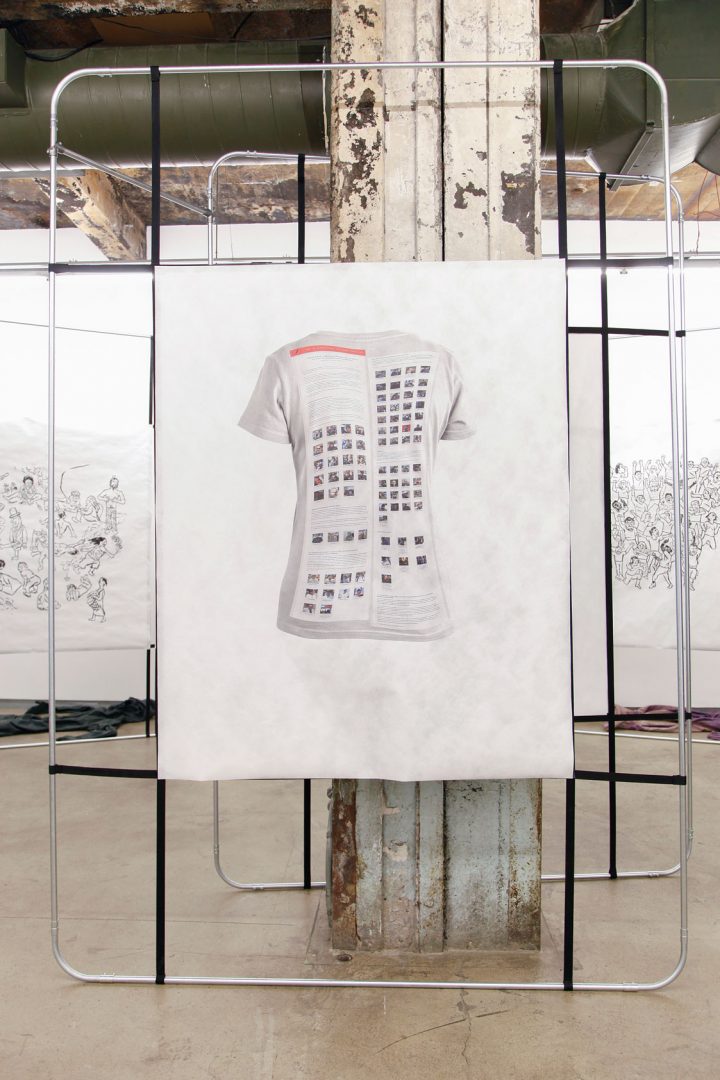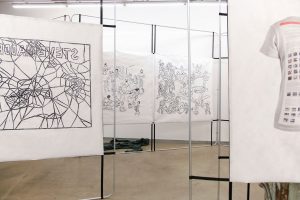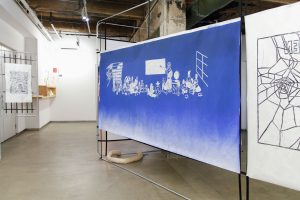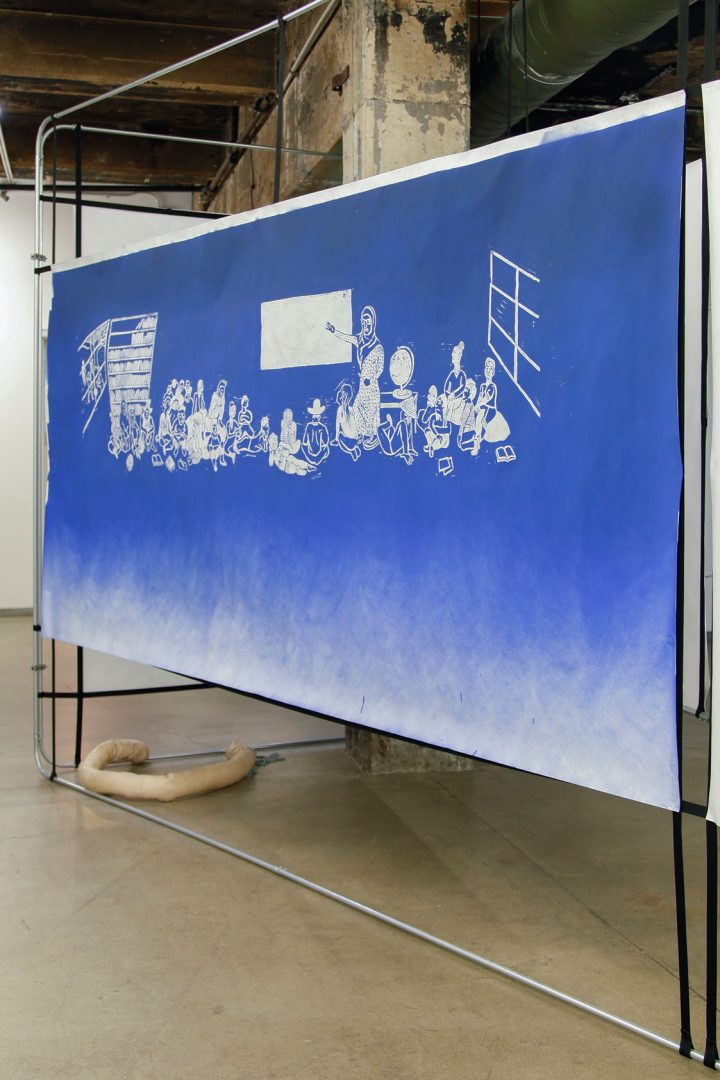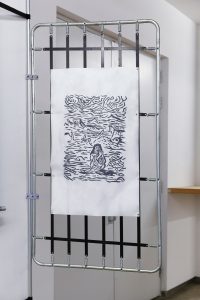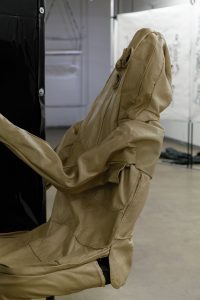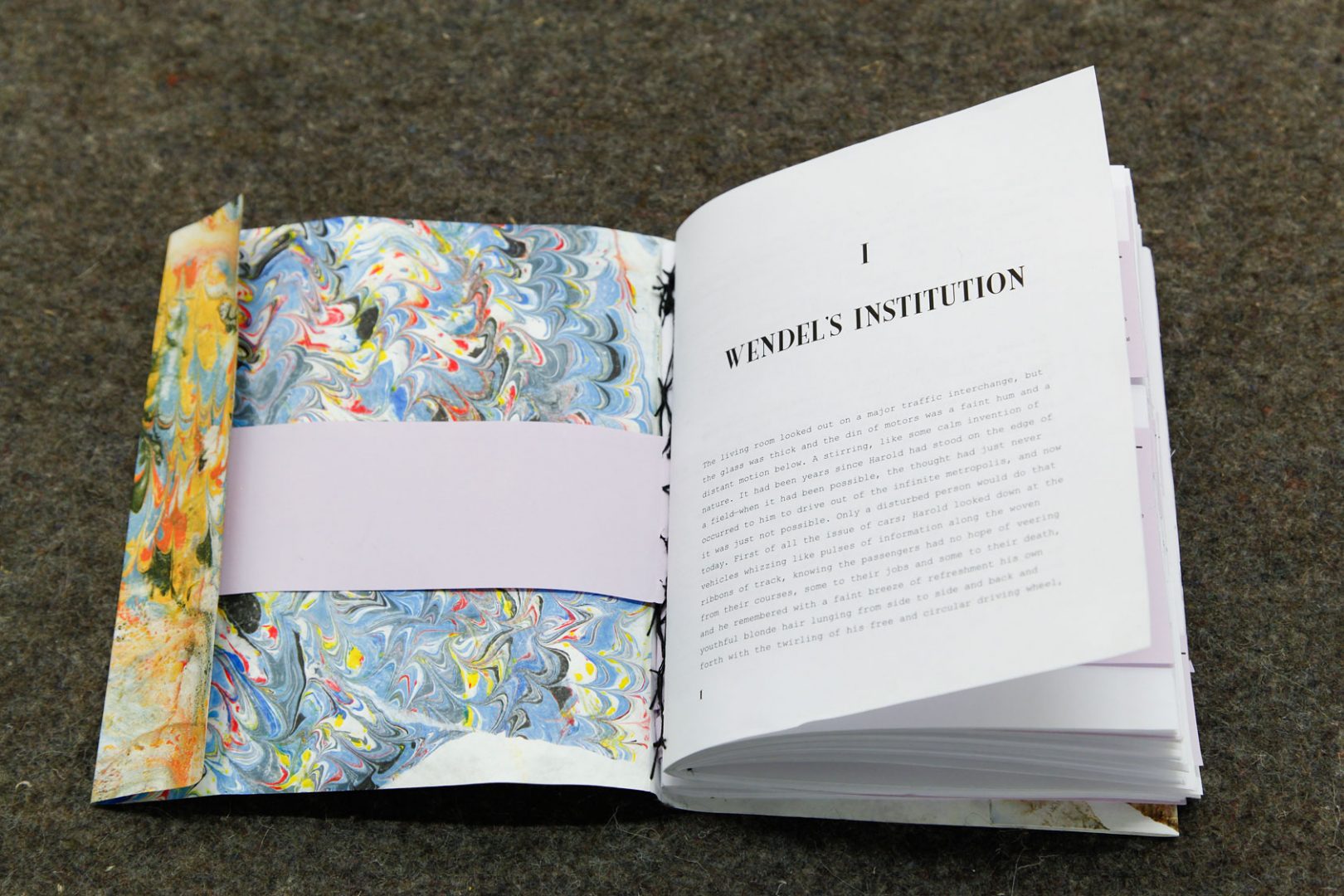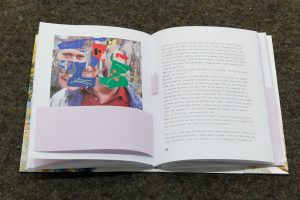Je Suis was my first large scale solo exhibition. It opened at the Fonderie Darling on February 28th, 2020, went on pause after two weeks because of the Covid 19 pandemic, reopened in July, then closed for good at the end of August 2020.
This exhibition gathered together several threads of work that I had been pursuing since moving to Montreal.
First, a series of large Styrofoam engravings on Tyvek paper were arranged around the space, mounted on nylon strapping stretched across metal frames.
The second thread was a number of leather figures scattered in the negative spaces of the print installation, as well as interacting with parts of the installation. These figures, called “armchair participants” had been made of leather from discarded couches found throughout the city. Two of them were still attached to chairs.
The third thread was three videos in different parts of the space. One of them was a wall projection of the video Infinite Cruelty, for nothing (2016), viewable from a cluster of foldable leather camp chairs.
Extremities (2020) is a three-channel video that was shown on plasma screens inside of a suspended black box, held up by a pair of armchair participants. Each of the video’s three screens is the perspective of one particular still camera: pinhole, 35 mm and digital SLR. They interact in intimate and sexualized ways, as whispering voices discuss whether and how to make a hidden free space into a public life.
Coercion (2020) was projected from the mouth of an armchair participant. This video was made from my grandfather’s super-8 mm films that he had shot from the 1930s to the 1960s. I extracted all the moments I could find where someone was being manipulated for the camera by another person, or by the camera itself.
These three threads reflected different modes of publicness or disguise, within an overall motif of freedom of expression. The rough aesthetic of the prints’ overt and pedantic quality (to my mind) recalls medieval wood cuts but also populist printmaking and editorial cartoons. The show’s title indeed refers to the campaign of solidarity following the 2015 murders of the Charlie Hebdo cartoonists in Paris. In a local context, the installation was informed by Quebec’s adoption of Bill 21, which ostensibly promotes secularism by “prohibit[ing] certain persons from wearing religious symbols while exercising their functions.” The means and uses of the body for expressing one’s place in society was a recurrent theme among the prints.
The videos, on the other hand, played with the tension between disguise and identity, where narratives of freedom and agency are found in situations of dissemblance and role play.
In my thinking, the leather armchair participants took on a sort of an intermediary role between the videos and the prints, bridges between self-representation in society, and the internal questions about who we actually are. They obviously reference particular sexual subcultures, but they are also skins to try on, viewpoints to adopt vicariously; or protective suits, almost post-apocalyptic.
